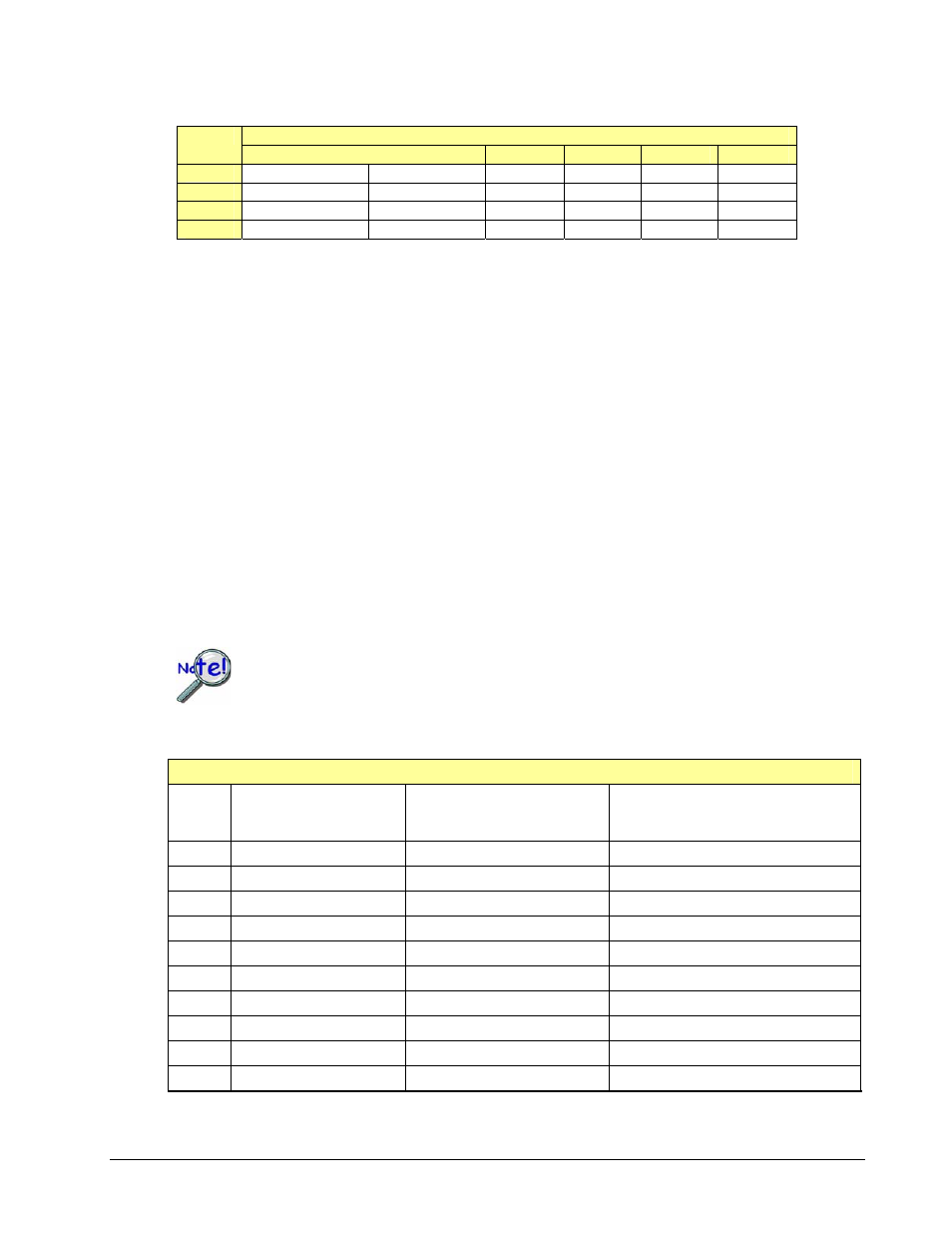T/c gains settings – Measurement Computing Data Acquisition Systems rev.10.4 User Manual
Page 173

Reading
Scan
Shorted Channels
0
1
2
3
1
V (ignored)
V (ignored)
CJC
J1a
J1b
J1c
2
V (ignored)
V (ignored)
CJC
J2a
J2b
J2c
3
V (ignored)
V (ignored)
CJC
J3a
J3b
J3c
4
V (ignored)
V (ignored)
CJC
J4a
J4b
J4c
In either case, the CJC and T/C readings are used to produce one temperature result for each T/C reading.
Thus, the 24 original readings are reduced to 12 temperatures.
To measure temperatures, the scan must be set up so the T/C measurements consecutively follow their
corresponding CJC measurement (the CJC measurement need not be the first element in the scan). If auto-
zeroing is enabled, the CJC measurement must be preceded by both a CJC zero measurement and a T/C zero
measurement.
All of the thermocouples converted with a single invocation of the conversion functions must be of the same
type: J, K, T, E, N28, N14, S, R, or B. To measure with more than one type of thermocouple, they must be
sorted by type within the scan, and each type must be preceded by the related CJC.
The scan is not restricted to thermocouple measurements. The scan may include other types of signals such as
voltage, current, or digital input; but conversion of these readings cannot be performed by the temperature
conversion functions cannot handle them.
T/C Gains Settings
The temperature measurements must be made with the correct gain settings. The gain settings for the different
thermocouple types depend on the bipolar/unipolar setting of the device, and the type of card being used. PC
cards can only be set for bipolar acquisitions, and have their own set of gain codes. The gains settings should
be established with the daqAdcSetScan function, as specified in the following tables.
Unipolar operations are not recommended for thermocouple measurement unless the
measured temperatures will be greater than the device temperature.
DBK19 and DBK52 Gain Codes
T/C
Type
Unipolar Gain Code
Bipolar Gain Code
Bipolar Gain Codes for
Daq/2000 Series devices*
and PC Cards
CJC
Dbk19UniCJC
Dbk19BiCJC
Dbk19PCCBiCJC
J
Dbk19UniTypeJ
Dbk19BiTypeJ
Dbk19PCCBiTypeJ
K
Dbk19UniTypeK
Dbk19BiTypeK
Dbk19PCCBiTypeK
T
Dbk19UniTypeT
Dbk19BiTypeT
Dbk19PCCBiTypeT
E
Dbk19UniTypeE
Dbk19BiTypeE
Dbk19PCCBiTypeE
N28
Dbk19UniTypeN28
Dbk19BiTypeN28
Dbk19PCCBiTypeN28
N14
Dbk19UniTypeN14
Dbk19BiTypeN14
Dbk19PCCBiTypeN14
S
Dbk19UniTypeS
Dbk19BiTypeS
Dbk19PCCBiTypeS
R
Dbk19UniTypeR
Dbk19BiTypeR
Dbk19PCCBiTypeR
B
Dbk19UniTypeB
Dbk19BiTypeB
Dbk19PCCBiTypeB
* Daq/2000 Series devices include DaqBook/2000 Series, DaqScan/2000 Series, DaqLab/2000 Series, and
DaqBoard/2000 Series devices.
Programmer’s Manual
908494
Daq API Command Reference 4.3-47
